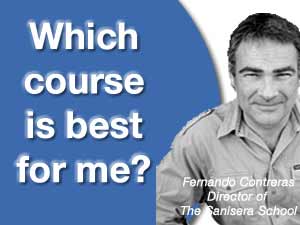General Information
 The Sanisera Archaeology Institute for International Field Schools offers an annual international archaeology program. Since then it has organized courses for students who come from all over the world to study abroad and who are interested in forensic archaeology, anthropology and osteology.
The Sanisera Archaeology Institute for International Field Schools offers an annual international archaeology program. Since then it has organized courses for students who come from all over the world to study abroad and who are interested in forensic archaeology, anthropology and osteology.
The San Telmo Church was built in Jerez de la Frontera (Cádiz) between the 16th and 17th centuries. This temple preserves a funerary crypt in its basement with 21 burials arranged in niches.
The objective of this course will be to carry out an analysis focused on the bioarcheology and pathology of the exceptional bone collection belonging to the San Telmo crypt, destined for a well-characterized burial that corresponds to young children dated between the 17th and 18th centuries.
In southern Spain, between the 16th and 19th centuries, burial was common in niches located in underground crypts that were found inside churches that had been founded by families of certain prestige or by groups. This is the case of the crypt of the church of San Telmo, which was built by a group of fishermen.
The crypts were very particular spaces, located in the underground area of Christian churches. To access them, one descended by stairs that were usually sealed by large slabs that blocked their entrance. In some of the crypts, it was not very common, the walls were decorated with pictorial scenes related to the dance of death. They were very humid places given the circumstances of their location in an underground area, prone to filtration of the phreatic layers, lacking natural light, without openings, nor ventilation to circulate the air.
The dimensions of the burial room in the crypts were very small and limited. For this reason, superimposed cavities in brick and mortar were built in the form of niches attached to the walls of the crypt vertically, arranged in rows to accommodate the largest possible number of deceased. The size of the niche was conditioned by the body dimensions of a single deceased.
During the reign of Carlos III, in 1781, a new order was imposed with the intention of preventing burials from continuing to be carried out inside churches and starting to be practiced in cemeteries located on the outskirts of cities. It was wanted to avoid possible infections to the parishioners when they practiced religious worship inside the churches by breathing the impure air mixed with the effluvia of the dead.
In 2015, Gonzalo Castro Moreno carried out an archaeological excavation in the crypt of San Telmo, recovering the bone collection from the niches to carry out an anthropological and paleopathological study of the buried individuals. It was concluded that the burials correspond to 46 infant individuals between 0 and 12 years of age, broken down as 6 infants (0-3 years) and 40 children (3-12 years).
Participants will learn the techniques of analyzing and recording information from human skeletal remains in an archaeological context. In this lab-based course, both lecture and experiential learning will be used to enable students to gain confidence in the identification and analysis of various skeletal conditions.
We will cover skills in basic demographics such as the techniques to determine age and sex of a skeleton, but will also progress to more advanced methodologies in osteological analysis. Students will learn skills such as: correctly measuring and recording skeletal elements according to set international standards , distinguishing between pathological and non-pathological bone and assessing patterns in pathological lesions, identifying marks on the skeleton that indicate how muscles were used during the person's life (including determining left or right handedness), and assessing nutritional status from bones and teeth. Additionally, participants will learn how to bring these different sources of information together to re-create the biological life history of the individuals buried at this site.
Currently, the collection of children's bones from the funerary crypt are deposited in the San Telmo Church and it will be the place where students will carry out the practices of this bioarcheology course.
The classes will be taught by Dr. Gonzalo Castro, director of the archaeological intervention of the funerary crypt, and which is part of his most recent research program.
The San Telmo Church (Jerez, Cadiz, Spain) will be the laboratory where the bioarcheology practices will be carried out An example of the entrance to underground funeral crypt from the 17th century Children's burials placed in niches Fragments of skulls of infantile individuals discovered in the crypt of San Telmo Excellent collection of jaws and teeth of young children from the 2015 dig in San Telmo
Intermediate bone fragments of infantile individuals from the same collection.











